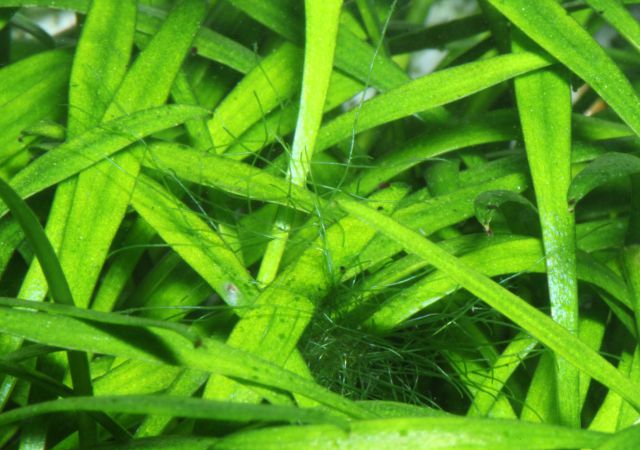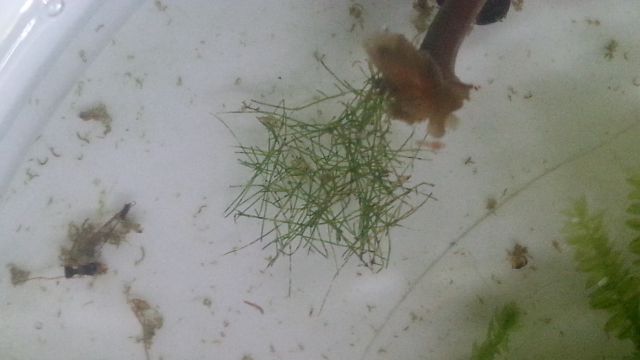In order to get answers to basic questions all around algae in the aquarium, we recommend you read this article first.
The species of the genus Cladophora are sometimes called branching algae, too. A still unidentified species, which we will call Cladophora sp. for the time being, is not overly common in aquaria. This green algae is very stubborn. It forms short, rigid green filaments that branch in many places. This growth habit makes Cladophora sp. easy to identify. It also has a characteristic smell that can be compared to that of mushrooms. Its cell walls seem to be harder than those of other algae, since Cladophora sp. is not eaten well by the typical algivores like the Amano shrimp. After some time it forms dense tufts. Usually these tufts sit between the branches of aquatic plants, mainly in ground-covering plants or mosses.

Common causes
Usually, tiny algae pieces are introduced with aquatic plants from private aquaria. A nutrient imbalance can then cause Cladophora sp. to spread massively. It is important to make sure the aquatic plants you purchase are of a good quality. Instead of low-priced imported bundles, plants from emersed cultivation or in vitro plants from tissue culture. We are happy to offer our customers high-quality plants from renowned nurseries like Tropica, Dennerle or Anubias. A small portion of the plants we sell is cultivated in our own tanks, where we pay the utmost attention that they are free from algae, and especially free from Cladophora sp. We also have a wide range of potted plants from emersed cultivations and in vitro plants from tissue culture.
Cladophora control
Interestingly, this algae species is not very susceptible to experiments with individual nutrient parameters. If Cladophora sp. has established in a tank it is very hard to get rid of. Optimizing your fertilising routine has almost no effect. If your tank only has a small infestation, pick the algae out consistently and as completely as possible using a pair of tweezers with a good length. To avoid fragments from establishing new populations, turn off the current in the aquarium while you remove the algae. Fogging small groups of algae with Easy Carbo or hydrogen peroxide has proven to be efficient to control Cladophora sp.

When there are larger groups of this algae in the tank, as a first-aid measure you could use AlgExit. Please note that a long-term treatment with this remedy may have a negative effect on the microflora. It is also known to do damage to some aquatic plant species or to inhibit their growth. If you keep nerite snails, make sure you remove them from the tank before treatment. Adding AlgExit to the tank should always be your last resort.
A treatment with AlgExit will significantly reduce the algae population so it will disappear from sight. However, it will probably still linger in the biological system. If you use plants or decoration from a tank that was once infested with Cladophora algae it is highly possible that you infect other aquaria with it.
If you want to make absolutely sure that you root out the Cladophora sp. we recommend a re-start of the tank. Do not re-use any of the plants or the substrate, and disinfect your technical equipment and your decoration before you put them into your new tank.